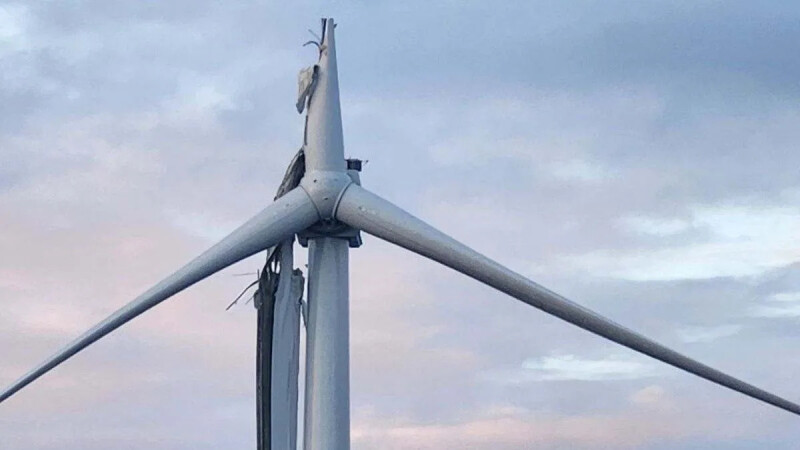A Vineyard Wind turbine located south of Nantucket, Massachusetts, already compromised by a blade failure last summer, was struck by lightning last Thursday, according to the U.S. Coast Guard.
The incident raises further questions about the structural resilience of offshore wind infrastructure and its implications for maritime industries, including commercial fishing.
The turbine, identified as AW38, had already sustained significant damage when a blade snapped during routine testing on July 13, 2024. Vineyard Wind confirmed that the lightning strike further impacted the splinted nub of the broken blade.
“Based on visual inspection of the damaged blade, preliminary evidence indicates that a lightning strike may have impacted the blade, though we continue to assess in coordination with GE Vernova,” Vineyard Wind said in a statement Sunday night, as The New Bedford Light reported.
Despite the strike, the company claims there was “no indication of debris” from the incident, and the current assessments show no damage to the nacelle (the turbine generator) or the tower. They also deployed aerial resources and at least one fishing vessel to monitor the area, ensuring no debris had fallen into the water. Fishing vessels had also assisted in collecting debris after the initial blade failure last summer.
The Coast Guard confirmed that as of Sunday, there were no reported navigational hazards, and they had no active involvement in response efforts. However, The New Bedford Light obtained an email from a Coast Guard officer stating that the blade nub “caught fire and detached.” The publication has not been able to verify the email with the Coast Guard.
“It makes sense that it was the same turbine that was damaged in July 2024, because it is not operational and does not have the same grounding and lightning strike protection systems designed to protect these turbines from lightning strikes,” commented Senator Julian Cyr, who represents Nantucket and Martha’s Vineyard.
The turbines are equipped with lightning protection systems designed to divert electrical current into the ground through receptors in the nacelle and blade tips. However, according to federal data, lightning strikes remain the largest source of blade failures.
Vineyard Wind and GE Vernova plan to remove and replace the damaged blade in May, yet the broken blade root remains attached to the turbine hub. Under its revised construction and operations plan, Vineyard Wind is currently removing blades from “a maximum of 22 wind turbine generators,” which is more than a third of its turbines.
On Monday, Jerry Leeman of the New England Fishermen’s Stewardship Association (NEFSA) stated in support of commercial fishermen in the area, “The coverup blows on. Vineyard Wind’s lack of transparency around the structural integrity of its mammoth wind turbines is deeply frustrating to fishermen. Reports indicate that the lightning strike occurred on Feb. 27, yet Vineyard Wind said nothing about the incident for at least four days. This was after Vineyard Wind waited a day and a half before acknowledging last summer’s devastating blade detachment. In fact, Vineyard Wind officials met in February with officials from the Bureau of Safety and Environment Enforcement to discuss improving communications over safety issues. Foreign offshore wind developers seem breezily dismissive of commercial fishermen.”







